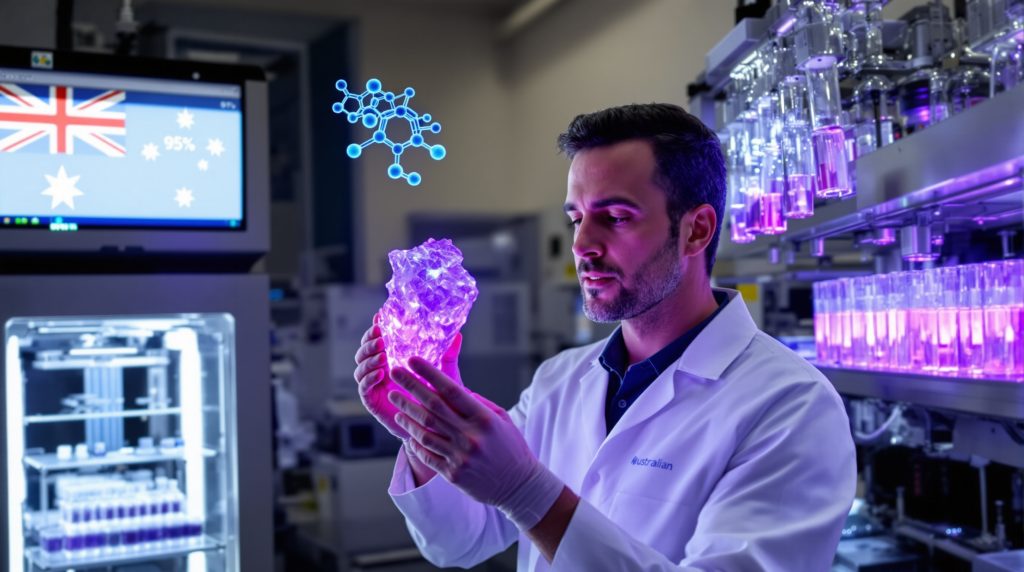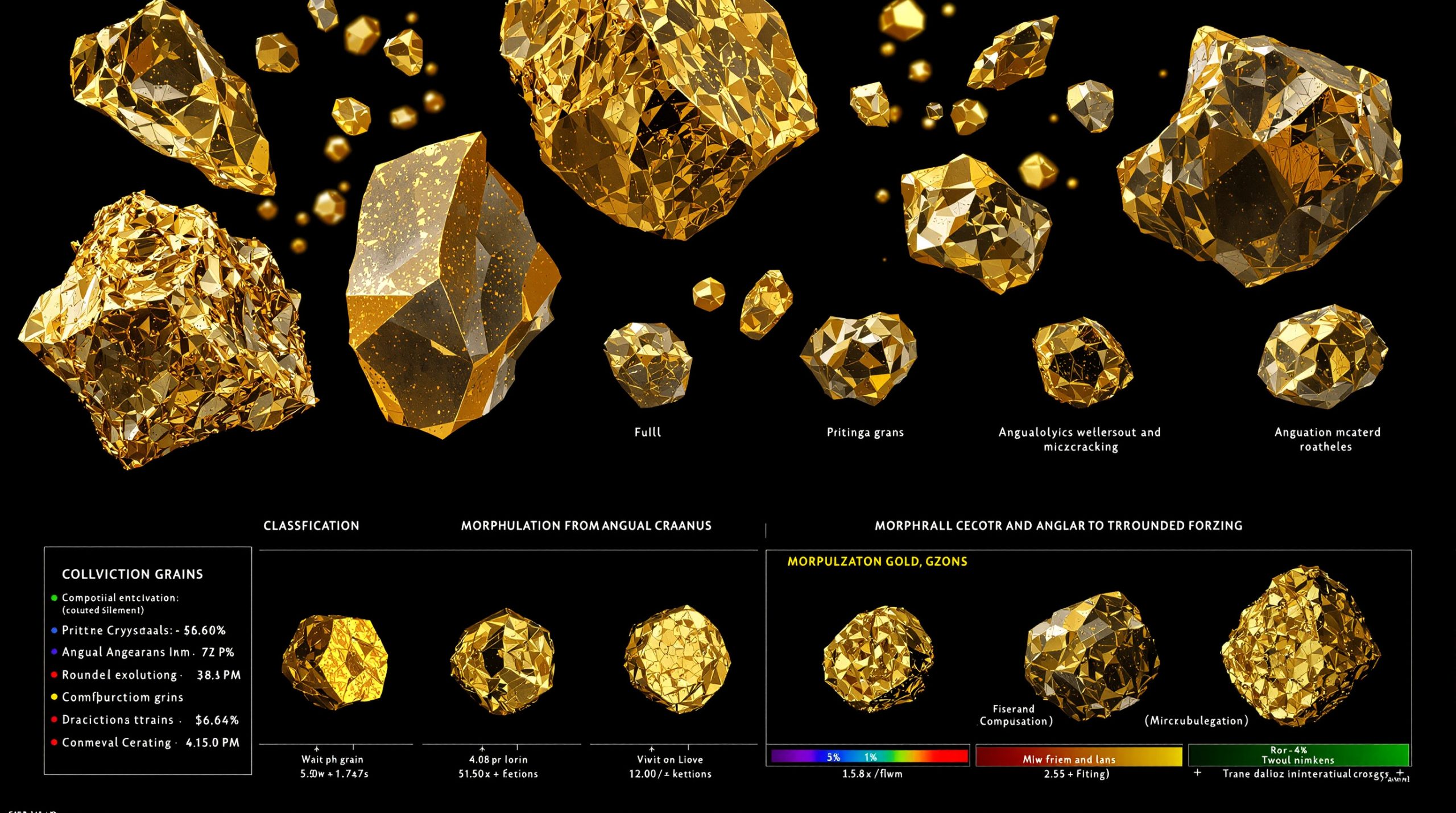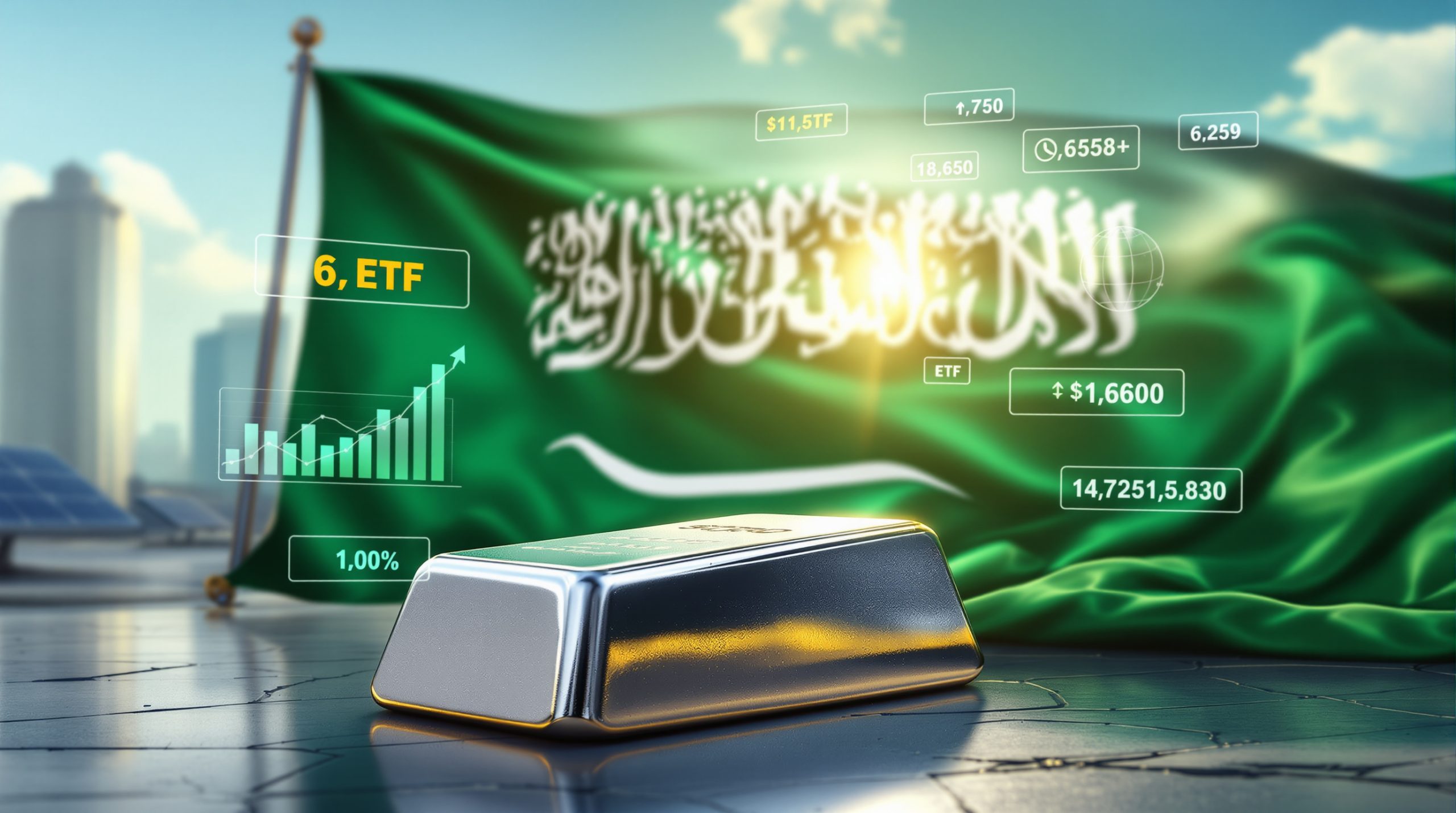Government Backing for Everest Metals Rubidium Project: Strategic Implications and Development Pathway
What is the significance of government support for Everest Metals' rubidium project?
The recent $150,000 funding from the Minerals Research Institute of Western Australia (MRIWA) marks a pivotal milestone in Everest Metals Corporation's (ASX: EMC) journey to establish Australia's first commercial rubidium industry. This government backing represents more than financial assistance—it signals official recognition of rubidium's strategic importance in critical technology applications and Australia's commitment to developing sovereign capabilities in high-value critical minerals strategy.
The funding specifically targets the advancement of extraction and purification processes at the Mt Edon project, bridging the crucial gap between laboratory research and commercial-scale production. According to CEO Mark Caruso, this support represents a significant endorsement of "what will be an Australian first for the rubidium industry," highlighting the national importance of the development.
This MRIWA support complements Everest's broader funding strategy, which has recently secured over $4 million from sophisticated investors to accelerate resource upgrade drilling and pilot plant studies. This multi-layered approach to project financing demonstrates growing confidence in the commercial viability of Australia's first rubidium production facility.
The partnership with Edith Cowan University (ECU), which includes an additional $30,000 in-kind contribution through investigator time commitment, further strengthens the project's research foundation. This collaborative structure between industry, academia, and government creates a robust framework for addressing the technical challenges of establishing a new critical minerals industry.
How does rubidium qualify as a strategic critical mineral?
Strategic Applications and Market Dynamics
Rubidium, despite its relatively low profile compared to lithium or rare earth elements, plays a crucial role in various high-technology applications that underpin modern defense, communications, and medical systems. The mineral's unique properties make it essential for:
- Advanced night vision technology
- Precision atomic clocks used in GPS and telecommunications
- Specialty glass manufacturing for fiber optics
- Medical imaging technologies
- Next-generation energy conversion systems
- Quantum computing components
The global rubidium market, while currently modest in size compared to other minerals, commands premium pricing due to limited supply and growing demand across these strategic sectors. With rubidium carbonate currently valued at approximately $1,170 per kilogram, the economic case for developing new production capacity is compelling, particularly for deposits with exceptional grades like those found at Mt Edon.
Supply Chain Vulnerabilities
Western nations face significant supply chain vulnerabilities for rubidium, with current production concentrated among a limited number of suppliers. The development of the Mt Edon project represents an opportunity to establish a secure, Western-aligned source of this critical mineral, reducing dependence on potentially unreliable supply chains and supporting broader Australia's critical minerals reserve objectives.
The strategic importance of this mineral extends beyond its direct applications to its role in supporting technological sovereignty and innovation ecosystems. As identified in the SmallCaps report, rubidium is "a critical raw material for use in various high-tech applications, including the development of new energy conversion technologies and new communication technologies."
What makes the Mt Edon project technically and commercially viable?
Resource Quality and Scale
The Mt Edon project hosts one of the world's highest-grade rubidium resources, with previous exploration delivering exceptional results:
- Inferred JORC resource of 3.6 million tonnes at 0.22% rubidium oxide and 0.07% lithium oxide
- High-grade zone of 1.3 million tonnes at 0.33% rubidium oxide
- Previous exploration results showing grades up to 0.54% rubidium oxide
- Total contained rubidium oxide of approximately 7,900 tonnes
The resource's exceptional grade, combined with its surface exposure and amenability to open-pit mining methods, creates favorable economics for extraction and processing. The co-occurrence of lithium (with grades up to 1% lithium oxide in some exploration results) provides potential for additional revenue streams, enhancing the project's overall commercial viability.
Innovative Extraction Technology
Everest Metals has developed proprietary advanced extraction technology that aims to achieve high recovery rates in laboratory testing. This innovative approach offers significant advantages over traditional extraction methods:
- Higher recovery rates for rubidium
- Reduced environmental footprint
- Lower water consumption
- More efficient processing workflow
- Potential for modular, scalable implementation
The MRIWA funding specifically targets the advancement of this extraction technology, with the primary objective of demonstrating consistent production of one kilogram of rubidium chloride per week at a target purity of 95% or higher. As CEO Mark Caruso noted, "Achieving this benchmark will serve as a significant milestone, strongly indicating the process's potential for commercial scalability and profitability."
Research Partnerships
The collaboration with Edith Cowan University (ECU) represents a key component of the project's technical development strategy. ECU's Mineral Recovery Research Centre provides specialized expertise in critical minerals processing and recovery techniques, with lead investigators conducting the majority of test work at the university's facilities.
The university's in-kind contribution of $30,000 enhances the value of the MRIWA funding and demonstrates institutional confidence in the project's technical merit. This research partnership brings together industry, academic, and government resources to address the technical challenges of establishing a new critical minerals industry.
How does the project align with national and international critical minerals strategies?
Australian Critical Minerals Policy Framework
The government backing for Everest Metals' rubidium project aligns perfectly with Australia's evolving critical minerals strategy, which emphasizes:
- Developing sovereign capabilities in minerals essential for defense and high-technology applications
- Establishing secure supply chains for critical minerals
- Adding value through domestic processing and technology development
- Supporting research and innovation in critical minerals extraction and processing
- Positioning Australia as a reliable supplier to key international partners
The Mt Edon project addresses each of these strategic objectives, demonstrating the alignment between government policy priorities and private sector investment in critical minerals development. The MRIWA funding represents a tangible expression of this alignment, with state government resources directly supporting the advancement of innovative extraction technologies that could establish a new high-value industry.
International Strategic Significance
The development of an Australian rubidium industry carries significant international strategic implications, particularly in the context of growing global competition for critical minerals resources. Western nations, including the United States and European Union countries, have identified critical minerals security as a key priority for economic and national security.
The Mt Edon project's potential to establish a secure, Western-aligned source of rubidium supports these international objectives, positioning Australia as a trusted supplier of a mineral essential for advanced defense and technology applications. This strategic alignment creates opportunities for long-term supply agreements and international partnerships that could further enhance the project's commercial viability.
What are the next steps in the project's development pathway?
Pilot Plant Development
The immediate focus of the MRIWA-funded research program is the advancement of extraction and purification processes toward pilot plant scale operations. The specific objective of producing one kilogram of rubidium chloride per week at 95% purity represents a critical milestone in demonstrating commercial viability.
The pilot plant development pathway includes:
- Optimizing extraction parameters through laboratory-scale testing
- Scaling up processes to demonstrate consistent production
- Validating product quality and purity specifications
- Establishing operational parameters for full-scale production
- Generating samples for potential customers and market development
This staged approach to technology development minimizes risk while systematically addressing the technical challenges associated with establishing a new mineral processing operation. The MRIWA funding provides essential resources for this development work, complementing Everest's internal investment in the project.
Resource Definition and Expansion
In parallel with process development activities, Everest plans to invest a portion of its recently raised capital in resource upgrade drilling at Mt Edon. This work aims to:
- Increase confidence in the existing resource through infill drilling
- Expand the resource base through step-out drilling
- Better define the high-grade zones for initial mining operations
- Improve understanding of mineralogical characteristics
- Support detailed mine planning and production scheduling
The combination of resource definition and process development activities creates a comprehensive development pathway that addresses both the resource base and processing technology required for commercial operations.
Commercial Scale-Up and Market Development
Looking beyond the immediate pilot plant objectives, Everest's development pathway includes:
- Engineering studies for commercial-scale production facilities
- Environmental and regulatory approvals for full-scale operations
- Market development activities with potential customers
- Exploration of strategic partnerships for project financing
- Evaluation of downstream processing opportunities
The modular nature of the proposed processing technology allows for staged implementation, with initial production capacity potentially expandable as market demand and project economics permit. This scalable approach minimizes initial capital requirements while maintaining flexibility to respond to market opportunities.
What are the broader implications for Australia's critical minerals sector?
Establishing a New High-Value Industry
The successful development of the Mt Edon project would establish Australia's first commercial rubidium industry, demonstrating the nation's capability to move beyond traditional bulk commodities into high-value critical minerals production. This precedent could encourage similar developments across other critical minerals, supporting the broader objective of diversifying Australia's mining sector and capturing more value from mineral resources.
The potential economic benefits extend beyond direct employment and investment to include:
- Development of specialized technical expertise in critical minerals processing
- Establishment of supporting service industries and supply chains
- Enhanced research and development capabilities in mineral processing
- Potential for downstream processing and value-added manufacturing
- Strengthened international partnerships in critical minerals
Enhancing National Resilience and Security
The development of domestic rubidium production capabilities contributes to Australia's national resilience by reducing dependence on imported critical minerals and establishing secure supply chains for materials essential to defense and high-technology industries. This enhanced resilience supports broader national security objectives and positions Australia as a more self-sufficient and capable nation in an increasingly uncertain global environment.
The strategic importance of this development extends beyond the immediate economic benefits to include long-term security advantages that align with Australia's national interests and international partnerships.
Setting Precedents for Critical Minerals Development
The government backing for the Mt Edon project establishes important precedents for how public and private resources can be effectively combined to address the challenges of critical minerals development. The collaborative model involving industry, academic institutions, and government agencies provides a template that could be applied to other critical minerals projects, accelerating the development of Australia's broader mining industry innovation.
The lessons learned through this project, both technical and commercial, will contribute to Australia's knowledge base and capability in critical minerals development, supporting future initiatives across the sector.
What are the commercial implications for Everest Metals?
Near-Term Catalysts
The MRIWA funding and associated research program create several near-term catalysts that could significantly impact Everest Metals' valuation and market position:
- Technical validation of the extraction process
- Demonstration of consistent high-purity product production
- Resource upgrade results from planned drilling programs
- Potential strategic partnerships or offtake agreements
- Advancement toward pilot plant construction decisions
These catalysts provide clear milestones for investors to assess the project's progress and commercial potential, potentially supporting share price appreciation as development objectives are achieved.
Long-Term Value Creation
Beyond the immediate development milestones, the Mt Edon project offers Everest Metals significant long-term value creation potential through:
- Establishment of a first-mover advantage in rubidium production
- Development of proprietary extraction technology with potential application to other deposits
- Creation of a high-margin revenue stream from rubidium sales
- Potential for expansion into other critical minerals markets
- Enhanced corporate profile as a critical minerals producer
The company's strategic focus on high-value critical minerals positions it well to benefit from growing global demand for materials essential to advanced technologies and defense applications.
Funding Strategy and Capital Efficiency
Everest's approach to project funding demonstrates a commitment to capital efficiency and shareholder value preservation. The pursuit of non-dilutive government funding through programs like MRIWA complements traditional equity financing, reducing overall capital costs and enhancing project returns.
The recent $4 million capital raising provides essential resources for advancing the project while the MRIWA funding specifically targets the technical development work required to demonstrate commercial viability. This diversified funding approach reduces risk and enhances the company's ability to maintain development momentum.
What role does Edith Cowan University play in the project's development?
Research Collaboration Framework
The partnership between Everest Metals and Edith Cowan University exemplifies the collaborative approach that has characterized the project's development. ECU's Mineral Recovery Research Centre provides specialized expertise in critical minerals processing and recovery techniques, with lead investigators conducting the majority of test work at the university's facilities.
The formal research collaboration agreement establishes clear objectives, timelines, and deliverables for the MRIWA-funded program, ensuring that research activities remain focused on commercial outcomes. ECU's in-kind contribution of $30,000 enhances the value of the MRIWA funding and demonstrates institutional confidence in the project's technical merit.
Knowledge Transfer and Capability Development
Beyond the immediate technical objectives, the collaboration with ECU contributes to broader knowledge transfer and capability development within Australia's critical minerals sector. The research program provides opportunities for:
- Training of graduate students in critical minerals processing
- Development of specialized technical expertise
- Publication of research findings (with appropriate commercial protections)
- Enhancement of Australia's academic capabilities in critical minerals
- Potential for ongoing research collaboration beyond the initial program
This knowledge transfer supports Australia's long-term objectives in critical minerals development and helps build the human capital required for a sustainable critical minerals industry.
Technical Expertise and Facilities
ECU's Mineral Recovery Research Centre provides specialized facilities and technical expertise that complement Everest's internal capabilities. The centre's experience in mineral processing, chemical engineering, and materials characterization creates a comprehensive technical foundation for addressing the challenges of rubidium extraction and purification.
The university's analytical capabilities enable detailed characterization of ore samples, process intermediates, and final products, supporting process optimization and quality control. This technical support enhances the efficiency of the development program and increases the probability of successful commercialization.
How does the Mt Edon project compare to international rubidium developments?
Competitive Positioning
The Mt Edon project's exceptional grade and scale position it favorably compared to international rubidium developments. With grades up to 0.54% rubidium oxide in previous exploration results and a substantial high-grade zone of 1.3 million tonnes at 0.33% rubidium oxide, the project represents one of the world's highest-grade rubidium resources.
This grade advantage translates to potential cost advantages in extraction and processing, enhancing the project's competitive position in the global market. The co-occurrence of lithium provides additional economic benefits that further strengthen the project's commercial viability.
Technological Differentiation
Everest's proprietary extraction technology represents a significant point of differentiation compared to traditional extraction methods. The technology's potential for high recovery rates and environmental advantages could create a sustainable competitive advantage that positions the Mt Edon project as a preferred source of rubidium for environmentally conscious customers.
The MRIWA funding specifically targets the advancement of this extraction technology, with the potential to establish Everest as a technology leader in critical minerals processing. This technological leadership could extend beyond rubidium to other critical minerals, creating additional long-term value opportunities.
Market Position and Customer Relationships
The development of the Mt Edon project positions Australia as a new entrant in the global rubidium market, with potential to establish strategic customer relationships across defense, technology, and research sectors. The project's Western location and alignment with allied nations' critical minerals strategies create opportunities for preferential supply arrangements and long-term partnerships.
The potential production capacity would represent a significant addition to global supply, with the ability to influence market dynamics and potentially support price stability through reliable production.
What are the key milestones to watch in the project's development?
Technical Development Milestones
-
Laboratory-scale process validation: Demonstration of consistent extraction and purification performance at laboratory scale
-
Pilot plant design completion: Finalization of engineering designs for pilot-scale operations
-
Achievement of production targets: Consistent production of one kilogram of rubidium chloride per week at 95% purity
-
Product qualification: Validation of product quality by potential customers
-
Scale-up parameters definition: Establishment of key operational parameters for commercial-scale production
These technical milestones provide clear indicators of progress toward commercial viability and help define the pathway to full-scale production.
Resource Development Milestones
-
Completion of resource upgrade drilling: Infill drilling to increase confidence in the existing resource
-
Resource update announcement: Publication of updated resource estimates incorporating new drilling results
-
Mining studies completion: Finalization of mine planning and production scheduling
-
Environmental approvals: Receipt of necessary environmental permits for mining operations
-
Definitive feasibility study: Completion of comprehensive technical and economic assessment
The resource development pathway complements the technical development activities, ensuring that both the resource base and processing technology advance in parallel.
Commercial Development Milestones
-
Strategic partnership announcements: Formation of key relationships with technology partners or customers
-
Offtake agreement negotiations: Progress toward securing sales commitments for future production
-
Pilot plant funding decisions: Commitment of capital for pilot plant construction
-
Construction commencement: Initiation of pilot plant construction activities
-
First production: Achievement of initial production from pilot operations
These commercial milestones demonstrate progress toward establishing a viable business operation and help define the pathway to revenue generation and profitability.
Conclusion: Strategic Significance of Government Backing
The $150,000 MRIWA funding for Everest Metals' rubidium project represents far more than financial assistance—it signals official recognition of rubidium's strategic importance and Australia's commitment to developing sovereign capabilities in high-value critical minerals. This government backing provides essential resources for advancing innovative extraction technologies while enhancing the project's credibility with investors, partners, and potential customers.
The collaborative approach involving industry, academic institutions, and government agencies creates a robust development framework that addresses both technical and commercial challenges. This model demonstrates how public and private resources can be effectively combined to establish new critical minerals industries that support national security, technological sovereignty, and energy transition and security.
As the project advances toward pilot plant operations and commercial production, it has the potential to establish Australia as a significant player in the global rubidium market, contributing to supply chain security for a mineral essential to advanced technologies and defense applications.
Ready to Spot the Next Major ASX Mineral Discovery?
Don't miss out on significant mineral discoveries like Everest Metals' rubidium project – get real-time alerts powered by Discovery Alert's proprietary Discovery IQ model, turning complex mineral data into actionable investment insights. Explore why major mineral discoveries can lead to exceptional returns by visiting Discovery Alert's dedicated discoveries page and start your 30-day free trial today.




